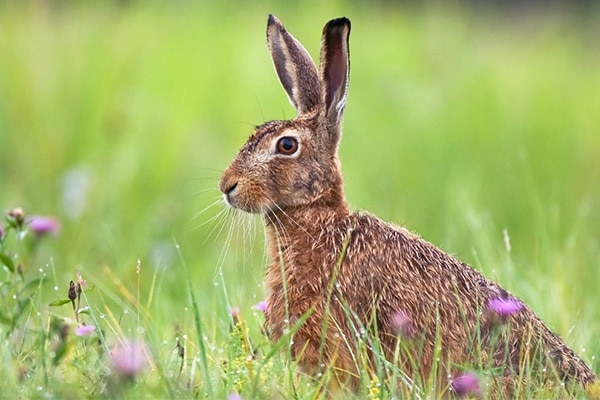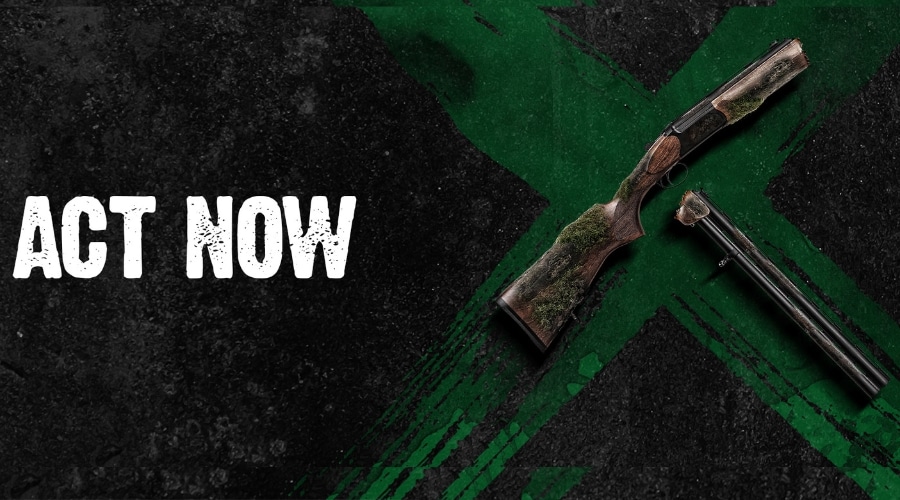
Challenges for shooting in animal welfare shake-up
Read Conor O’Gorman’s blog following the inclusion of plans for new animal welfare legislation in the Queen’s speech in parliament yesterday.
Get information on the legal shooting season for mammals and birds in the UK.
Apply for funding for your project or make a donation today
Comprehensive information and advice from our specialist firearms team.
Everything you need to know about shotgun, rifle and airgun ammunition.
Find our up-to-date information, advice and links to government resources.
Everything you need to know on firearms law and licensing.
All the latest news and advice on general licences and how they affect you.


In honour of International Women’s Day, we recount the stories of female gamekeepers in history who blazed a trail for generations to come, as written by David S. D. Jones.
Trailblazing female gamekeepers are not a modern concept. In truth, records show us that women ‘keepers have been around for more than two hundred years.
Even earlier, young women were employed as ‘fesant maids’ at country houses in the 17th century to artificially rear pheasants for the table in a purpose-built pheasantry. By the mid-18th century, they were rearing pheasants for shooting before it became general practice for male gamekeepers to carry out this work.
One of the first lady gamekeepers on record in Great Britain, Polly Fishburn, was engaged as a beatkeeper on the Holkham estate in Norfolk during the early years of the nineteenth century by Thomas Coke, 1st Earl of Leicester, then one of the nation’s most progressive landowners. A crack shot who always wore a keeper’s hat, Polly had a reputation for terrorising poachers and brought many of them to justice at the local magistrates court.
‘Black-eyed Polly’ as she was known, moved north to Cannon Hall in Yorkshire in 1822 to work as a keeper for John Spencer Stanhope and continued in her chosen profession until the end of her days.
Female gamekeepers are reputed to have been employed on sporting properties in Dorset, Wiltshire, Norfolk, Suffolk and Carmarthenshire during the mid-19th century. However, none appear on the lists of keepers published annually in provincial newspapers or in quarter sessions records.
The next definitive sighting of a lady gamekeeper occurs in the early 1890s when the 5th Earl of Rossmore appointed Ann Holland as keeper over his 10,000-acre grouse moor at Mountain Lodge in Co. Monaghan in Ireland. She quickly stopped all poaching activities on the property after shooting the heel of the boot of a fleeing poacher with her old police carbine.
Shortly after the Earl of Rossmore engaged Ann Holland at Mountain Lodge, William Deacon, a wealthy London banker, appointed Mary Bayman as headkeeper at the Poynters estate at Cobham in Surrey.
The widow of his previous headkeeper and undoubtedly Britain’s first female head gamekeeper, she took charge of a team of three underkeepers and was responsible for rearing 3,000 pheasants annually. Mary held office until the death of Mr Deacon in 1903, when she retired on a life pension bequeathed to her under the terms of his will.
From the early Edwardian period onwards, a number of English sporting estates started to employ women gamekeeping assistants, usually the daughters of senior keepers, who helped out with pheasant rearing during spring and early summer.
One of the first fully-fledged female keepers at this time was Annie Gillard, who worked for Lord Cowdray at Cowdray Park in Sussex. She managed her own beat which she patrolled alone with a dog at night, and was something of ‘a terror’ to members of the poaching fraternity in the area, having won her spurs by capturing a poacher single-handedly at the tender age of 17!
Following the outbreak of World War I in 1914, the handful of existing female keepers and pheasant rearers, together with keepers’ wives and daughters, all rallied round to keep shoots running after many keepers were conscripted into the armed services. Women also undertook earth-stopping duties and in some parts of East Anglia and acted as beaters on driven shoots.
In 1916, the cigarette manufacturers Carreras Ltd. featured a female gamekeeper on a cigarette card in their Women On War Work series, captioned as follows: “The woman gamekeeper is a distinct novelty in English country life. Quite a number of sportswomen have taken up this work for the duration of the war. And in this they
are proving themselves thoroughly capable and efficient.”
Another lady gamekeeper of note at this time was Hilary Dent, a great-niece of the 4th Earl of Harrowby, who was employed by the 2nd Lord Montague on the Beaulieu estate in Hampshire in 1916. She attracted attention from the press who, erroneously, described her as “The First Woman Gamekeeper”. Unlike many of her contemporaries, she was exempted from carrying out night patrols and was permitted to bury dead predators rather than hang them on a ‘vermin line’.
As with countless other industries, female gamekeepers undoubtedly ensured the survival of many shoots throughout World War I.
Only a handful of women were employed as gamekeepers during the inter-war years. Estate work was often scarce due to staff cuts being made by landowners impoverished as a result of depressed farming conditions, or excessive death duties.
Indeed, only one female keeper is recorded on the decennial census for England and Wales taken in 1931. Mrs Muriel Parsloe, a granddaughter of Sir William Jardine of Applegirth, Bt., and one of several women keepers in-post during the 1930s, had been obliged to enter the profession following her husband’s death. Muriel single-handedly ran a 1,000-acre driven shoot in Hertfordshire with great success.
The outbreak of World War II in 1939 led to a resurgence in the number of women gamekeepers working on country estates. Many of these were keepers’ wives who stood in for the duration after their husbands had enlisted in the armed services.
Pest control duties were also carried out on sporting properties, farms and elsewhere during the war years by around 200 members of the Women’s Land Army who had been trained as rat catchers and vermin trappers.
Lille Payne, commonly known as ‘Pop Jelley’, the first full-time lady gamekeeper on record in the post-war era, succeeded her father as keeper to Colonel Tony Murray-Smith, MFH on the Gumley estate in Leicestershire in 1946 and remained in-post for the next half century or so.
A sergeant in the ATS during World War II, a member of Gumley Parish Council and a vice-president of the village cricket club, Lille was at one time, according to a leading equestrian magazine, one of only two female keepers in Great Britain. The other half of the pair was, almost certainly, the aptly named Miss B Squirrel, a former land girl, who was employed as a gamekeeper by Major John Holt Wilson at Redgrave in Suffolk from the mid-1950s onwards.
The next lady gamekeeper of note, Elizabeth Cleverley, a keeper’s daughter, began her career in 1964, working for Mr Andrew Craig-Harvey on the 1,200-acre Lainston estate near Winchester in Hampshire, serving on the property for over 40 years. She was followed in the profession by Jill Mason, now a well known author and regarded as the doyenne of female gamekeepers in the UK who became a keeper at Cowdray Park in 1970.
Six years after Jill Mason became a gamekeeper, Dawn Warr, then just 16 years of age, was engaged as an underkeeper at Melbury Park in Dorset by Lady Teresa Agnew. In 1993, after 17 years of service on the estate, she was promoted to head gamekeeper, only the second woman to hold such a position in the 20th century. An artist in her spare time, she resigned her head keepership a year later in 1994 to pursue a career in art and taxidermy and has achieved national fame for her superlative pet portraits.
Over the past 25 years or so, however, the number of lady gamekeepers employed on sporting properties in Britain has gradually begun to increase. In 1998, according to a BASC press release, there were only six lady gamekeepers in the country. Today, the National Gamekeepers’ Organisation estimates that more than 100 women are currently engaged in the profession on estates as far apart as the South-West of England, Staffordshire, Suffolk and the Scottish Highlands.
Pictured top left to right: Elsie Reeves who worked as a gamekeeper on the Whatcombe estate in Dorset during World War I; a female gamekeeper circa 1910; and Hilary Dent, gamekeeper to Lord Montagu of Beaulieu 1916.
Whether you are a pest controller, falconer, deer stalker, clay shooter, wildfowler, game shooter or someone into their fishing, BASC is working to encourage more women to join our fieldsports community. Find out more about Women in Shooting here.


Read Conor O’Gorman’s blog following the inclusion of plans for new animal welfare legislation in the Queen’s speech in parliament yesterday.

BASC is urging members and the wider rural community to stand up against the Welsh government’s proposals to restrict gamebird releasing.

Tough new measures, that have come into force in England and Wales, have been welcomed by BASC.
Sign up to our weekly newsletter and get all the latest updates straight to your inbox.
© 2025 British Association for Shooting and Conservation. Registered Office: Marford Mill, Rossett, Wrexham, LL12 0HL – Registered Society No: 28488R. BASC is a trading name of the British Association for Shooting and Conservation Limited which is authorised and regulated by the Financial Conduct Authority (FCA) under firm reference number 311937.
BASC Direct Ltd is an Introducer Appointed Representative of Agria Pet Insurance Ltd who administer the insurance and is authorised and regulated by the Financial Conduct Authority, Financial Services Register Number 496160. Agria Pet Insurance is registered and incorporated in England and Wales with registered number 04258783. Registered office: First Floor, Blue Leanie, Walton Street, Aylesbury, Buckinghamshire, HP21 7QW. Agria insurance policies are underwritten by Agria Försäkring.
If you have any questions or complaints about your BASC membership insurance cover, please email us. More information about resolving complaints can be found on the FCA website or on the EU ODR platform.